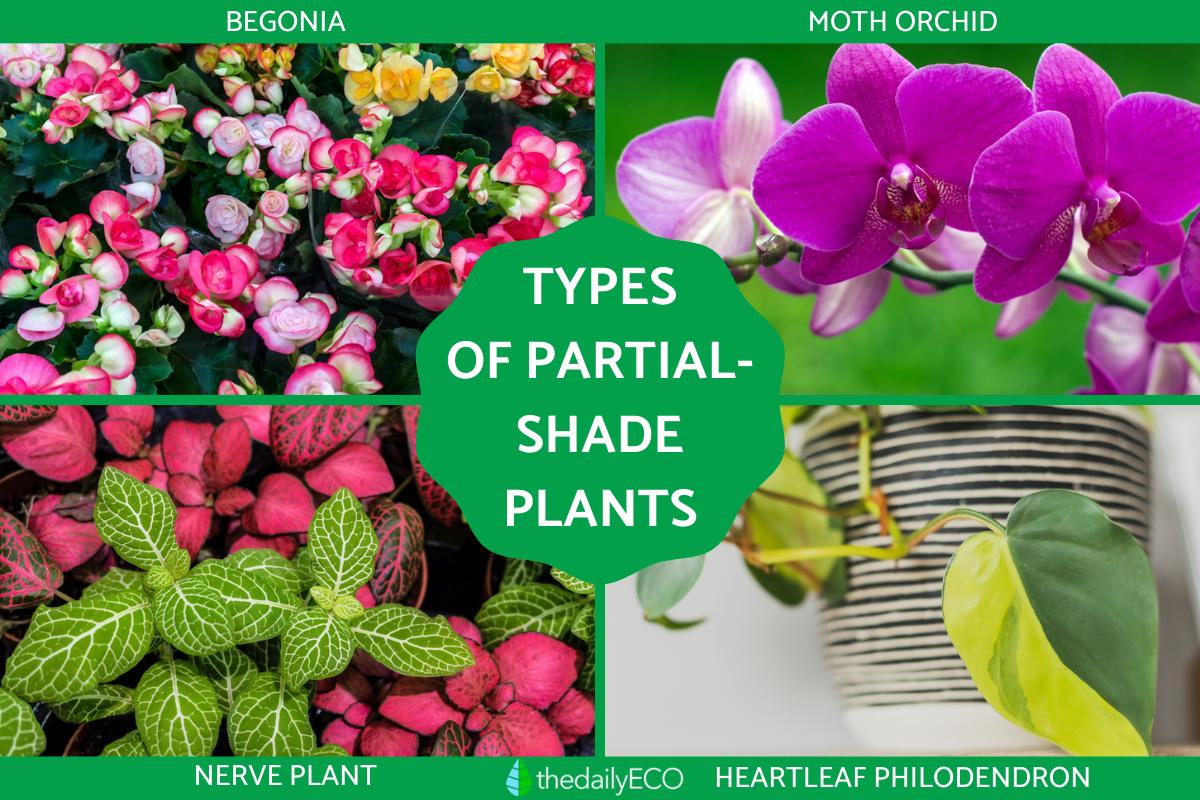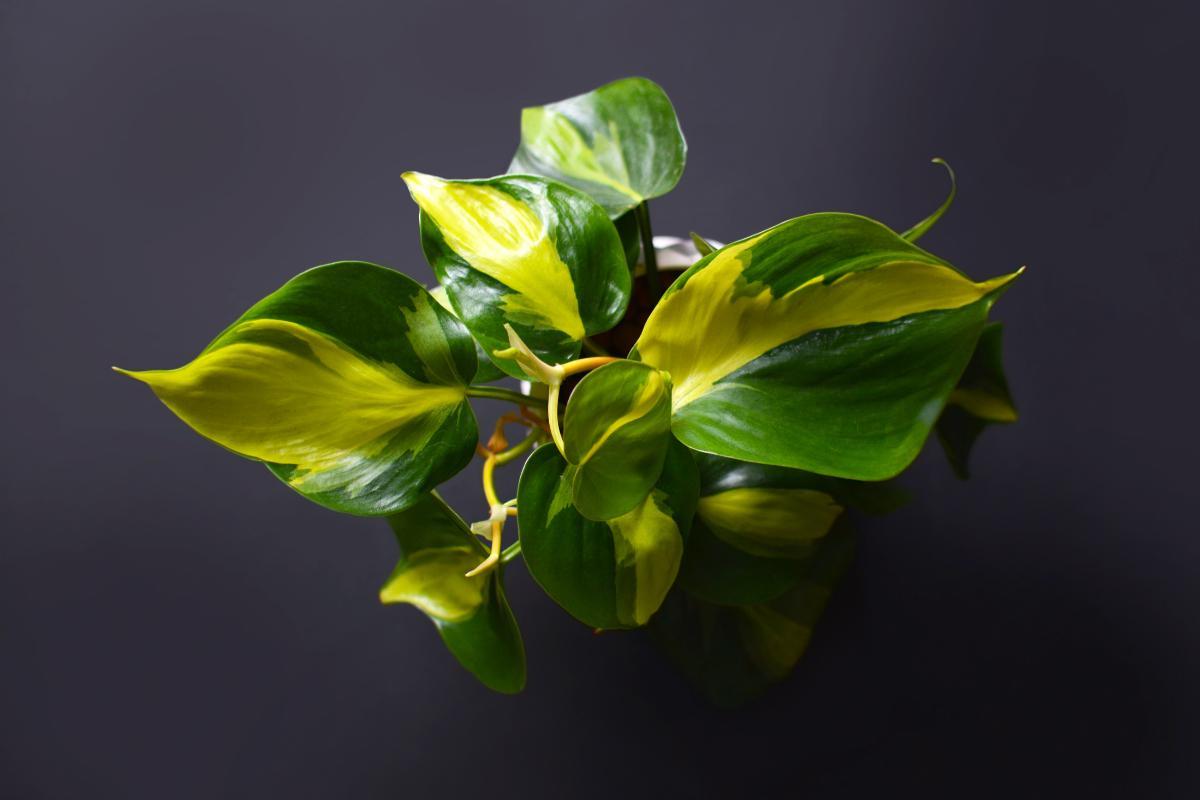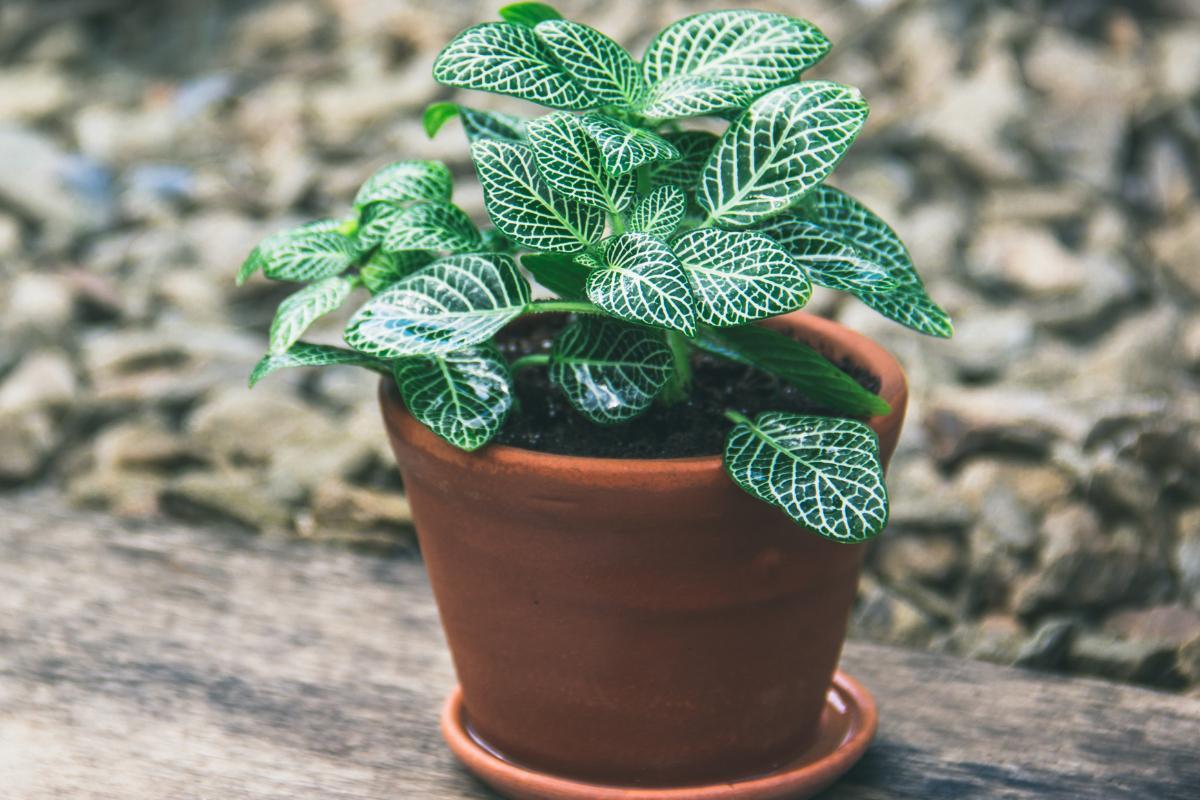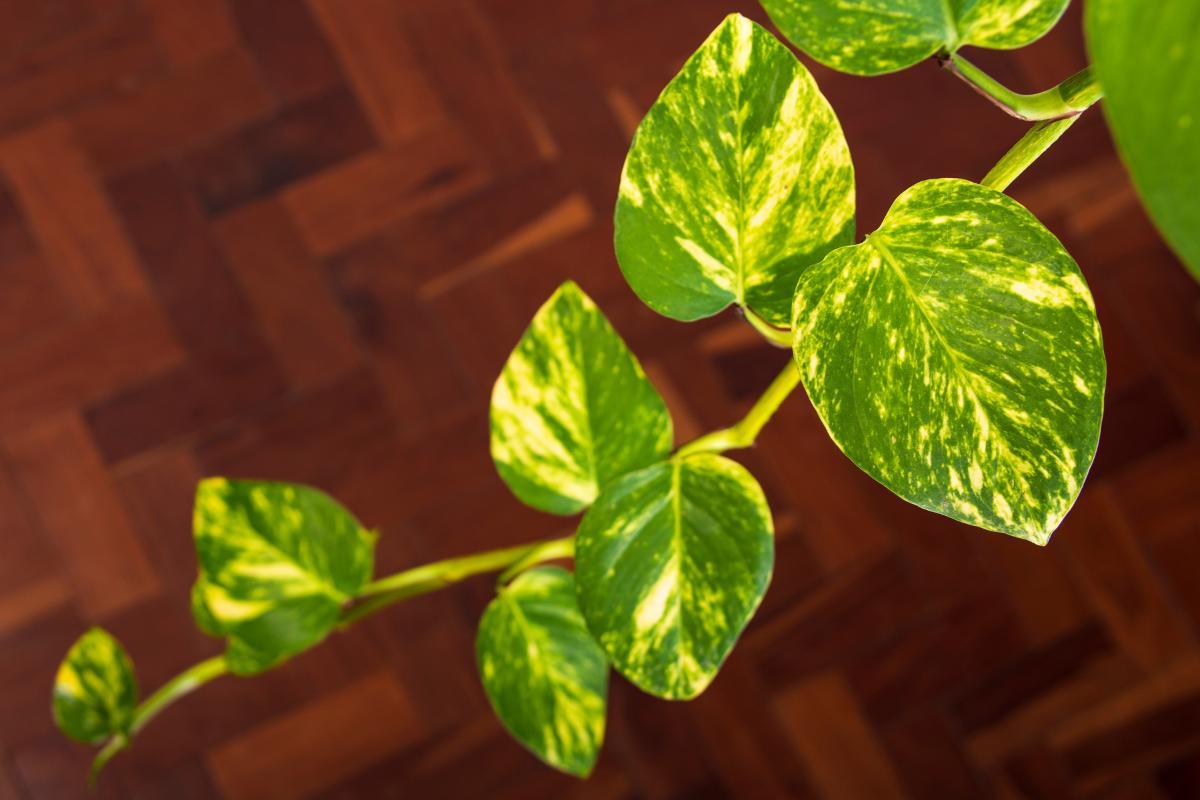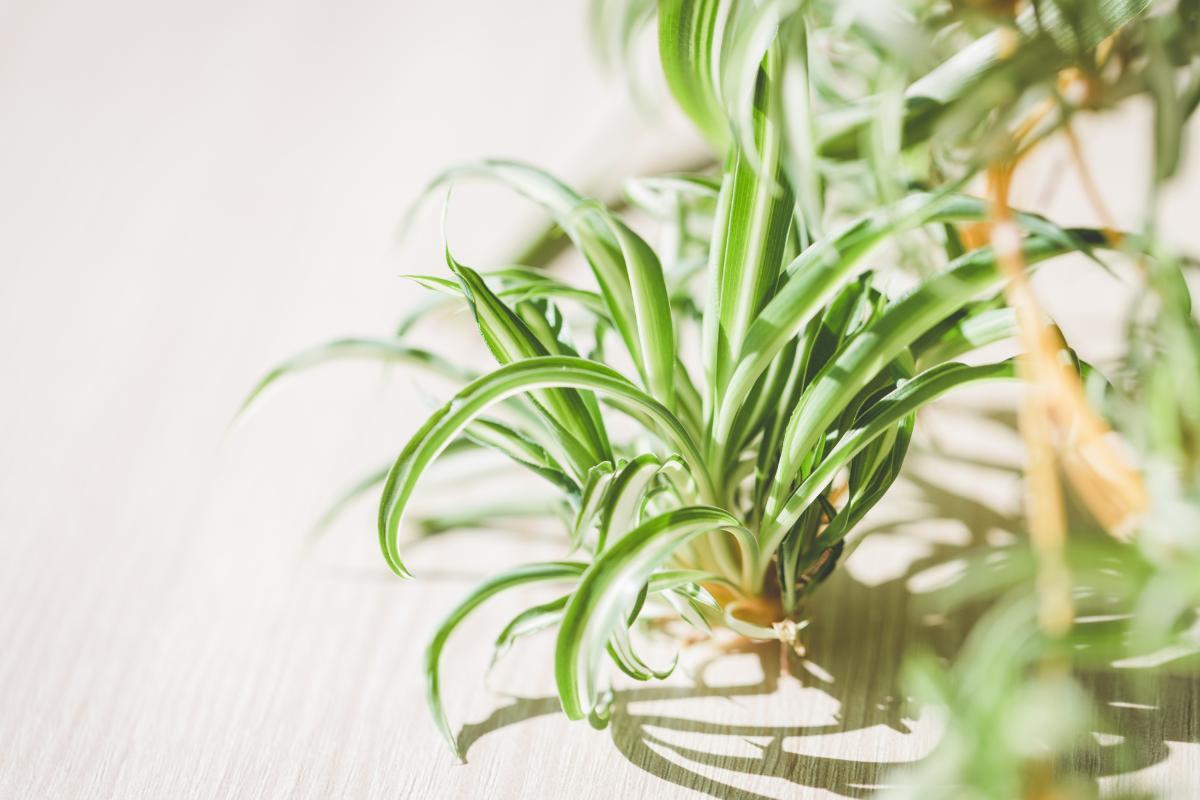The Best Partial-Shade Plants


Plants need sunlight to photosynthesize, but the sun requirement varies according to the natural environment to which they belong. Some plants grow in the open and can tolerate long periods of sun, especially if they are from tropical regions. Others need minimal sun and will thrive in low-light environments. thedailyECO presents the best partial-shade plants. This are plants that only need partial sun, usually developing in places which have some sun exposure, but are used to filtered or indirect light.
- Begonias
- Moth orchids
- Calathea
- Ferns
- Ivy
- Cyclamen
- Bromeliads
- Umbrella tree
- Heartleaf philodendron
- Swiss cheese plant
- Nerve plant
- Aspidistra
- Golden pothos
- Zuzu plant
- Spider plant
- Lady palms
- Fiddle-leaf fig
- Chinese money plant
- Dracaena
- Devil's tongue
Begonias
Begonias are plants that adapt well to moderate climates and do not tolerate direct sun. This is because they are prone to burning, so they are plants that require partial shade. There is an enormous variety of leaves, colors and shapes of begonias, but the entire genus characteristic for having spectacular leaves and very striking small or large flowers. They are herbaceous in appearance with red begonias being shown in the photo below.
The colorful leaves of different types of begonias make them very attractive to different types of pollinators. Discover more plants like this with our list of flowers that attract hummingbirds.

Moth orchids
Moth orchids are those that belong to the genus Phalaenopsis. They are tropical plants with large, glossy dark green leaves and complex large flowers which bloom in bright colors. They are native to tropical areas where the tree canopy filters light, so when growing them at home they should be given a similar partial-shade environment. This condition is used to have spectacular flowers inside the home which are associated with elegance and luxury.

Calathea
From the genus Calathea and considered a type of prayer plant, calatheas are characterized by having very striking leaves with white, purple or pink patterns. They depend on a warm temperature above 18 ºC/64.4 ºF and need low to medium light. Prolonged exposure to direct sunlight will burn the fragile and thin leaves, but this partial shade plant needs some sun to thrive.
Discover another type of plant with this common name with our guide to caring for a prayer plant (Maranta leuconeura).
You can buy a potted calathea with the link below:

Ferns
Perhaps the quintessential type of partial-shade plant, ferns are among the oldest extant plants in the world. Some species of fern date back to least 300 million years ago. They are very resistant and can occur in places where flowering plants will not survive, as long as there is semi-shade and humidity. They are associated as plants for partial shade because they thrive at the base of larger trees which provide them with filtered light.
Since ferns produce via spores and not seeds, they are considered types of cryptogamic plants. Some of the best ferns for indoors include the maidenhair fern (Adiantum capillus-veneris) or the male fern (Dryopteris filix-mas).

Ivy
Ivy has been used since Victorian times as a sun and shade plant to decorate indoor spaces. This is largely thanks to the fact it was more economical than flowering plants for semi-shade, as well as the great aesthetic beauty (see photo) offered by its shiny, palmate leaves. It is a climbing type of plant that can be used as a ground cover, to give life to dead trunks or as a tapestry for indoor or outdoor use on walls and trellises that do not receive sun all day.
Not all ivy plants need to be used in these ways. You can learn how to keep it indoors with our article on potted ivy care.

Cyclamen
This is one of the best ornamental plants for partial shade since it blooms beautifully in winter. This can add a lot of color to an often drab season. In fact, it is one of the few plants that bloom in the cold months and even tolerates subzero temperatures and depends on the cold to thrive. It produces pink, red and white flowers on rounded leaves that are also striking for their green color tinged with white.

Bromeliads
It is another group of tropical plants which are native to the Americas. THey have large, glossy leaves with exotic large flowers. They have very striking shapes and bright colors. They store water between the leaves to maintain good humidity levels. They are epiphytes, meaning they live on trees. They depend on these tress to provide shade. To have them at home it is necessary to give them similar filtered light as direct sunlight will kill them.
A beautiful example of a red bromeliad can be seen in the photo below.

Umbrella tree
Heptapleurum actinophyllum is a shrubby tree with a thin trunk that at the tip develops several umbrella-shaped leaves. As a tree, it can tolerate full sun exposure, but it can still thrive in partial shade. Although the outdoor trees can grow to be relatively large, it has been cultivated as house plant in temperate regions. It is these houseplants which are considered one of the best partial-shade plants since they do not need full sun exposure.

Heartleaf philodendron
Heartleaf philodendron (Philodendron scandens) is a climbing philodendron native to America, with large heart-shaped leaves (as seen in the photo). It remains green all year round and requires moderate temperatures above with filtered light.

Swiss cheese plant
Also known as a five holes plant, this is noted for its perforated leaves which give it a very unique look. More than simply making them beautiful, this plant from the genus Monstera has perforations because it allows as much light as possible to filter through to the parts of the plant underneath. For this reason, not only does this plant require partial shade, its own physical appearance provides the ability to filter its own light.
Discover many other types of monstera plants with our related guide.

Nerve plant
Plants from the genus Fittonia have small leaves with veins of many colors depending on the species. This is why they have been given the common name of ‘nerve plants’, since the veins in their leaves look like the endings of the human nervous system. It grows as a low and extensive herbaceous plant. It needs partial sun to maintain its natural shape. In the absence of light, the stems tend to lengthen.
Purchase a red varietal of this plant with the affiliate link below:

Aspidistra
One of the most common partial-shade plants is the various plants from the genus Aspidistra. They are native to Asia and are a herbaceous creeping type with large lanceolate leaves. They are typically filtered light and require little care to make them grow healthy. It can be kept outdoors as long as it is grown under trees which act as natural shade. Keep them out of direct sunlight if you want them indoors.

Golden pothos
Golden pothos (Epipremnum aureum) is one of the most popular partial-shade indoor plants, especially for its climbing or hanging ability that can male it ideal for decoration. It doesn't need a lot of light, with about 4 hours per day of partial sun being sufficient. The photo shows and example of the variegation common to its leaves.

Zuzu plant
Among the plants that only need partial shade, the Zuzu plant (Zamioculcas zamiifolia) is one of them that tolerates a little more light without burning. Each stem has several leaves which grow tight together in a vertical motion. The leaves are shiny and dark green, which is why it has gradually gained fame among the most sought-after indoor plants.
Discover more plants you can keep inside with our article on the best indoor plants that absorb heat.

Spider plant
Another of the most common partial-shade indoor plants is the spider plant (Chlorophytum comosum). In fact, this plant does not fare well in outdoor spaces, especially in warm climes. This is because its leaves are light green with white strips (see photo). The lack of darker pigments makes it prone to burning in direct sun. These leaves are long and thin that fill empty spaces.
To make it easier, you can purchase a pre-potted spider plant using the link below:

Lady palms
Lady palms are various plant species from the genus Rhapis. It is a palm tree that grows well in shade or partial sun. They are native to Asia and is tolerant of low maintenance. The typical leaves that start from the stem are somewhat thick compared to other palms. They are arranged terminally on the stems.

Fiddle-leaf fig
Fiddle-leaf figs (Ficus lyrata) have large, leathery, curved and shiny leaves that grow from a tall, tree-like stem. It is an option for indoors because it does not tolerate direct sunlight. This is not the same with all fig trees and other members of the Ficus genus, so you will need to check the specific care guidelines for each individual species.
Some types of fig are good for arid areas. This is because they are a type of xerophytic plant, i.e. drought-resistant plants that require relatively little watering to grow and remain healthy.

Chinese money plant
The Chinese money plant (Pilea peperomioides) is striking due to its central stem from which the long petioles of the spherical leaves originate. Each has a round terminal leaf. This partial-shade plant needs relatively little light to stay healthy and not burn in the sun.
If you have areas in the home which only receive partial sun, you may want to purchase a live Chinese money plant for yourself with the link below:

Dracaena
It has a thin trunk and long thin leaves that hang from the tip. It does not tolerate temperate temperatures because it is native to tropical African areas. It needs abundant, but filtered light. Fortunately, this plant tolerates dry conditions quite well, something that typically does not occur in other partial-shade tropical plants.
Although it can tolerate heat well, dracaena plants are some of the best plants that absorb moisture.

Devil's tongue
This is another plant which is now included in the genus Dracaena, but which was once in its own genus known as Sansevieria. It has various other common names, but it develops tall, flat green leaves with yellow margins. It grows very well in areas with little light and its watering is low, so it is considered low maintenance.
Use the affiliate link in the box below to purchase this beautiful partial-shade plant for yourself:

If you want to read similar articles to The Best Partial-Shade Plants, we recommend you visit our Plant care and cultivation category.
- Serrano, Z. (2005). Greenhouse construction. Costa Rica: Mundi-Prensa Editions.
- Bailey, F. (2020). The healing power of houseplants: Take care of your plants and they will take care of you. Spain: RBA Books.





